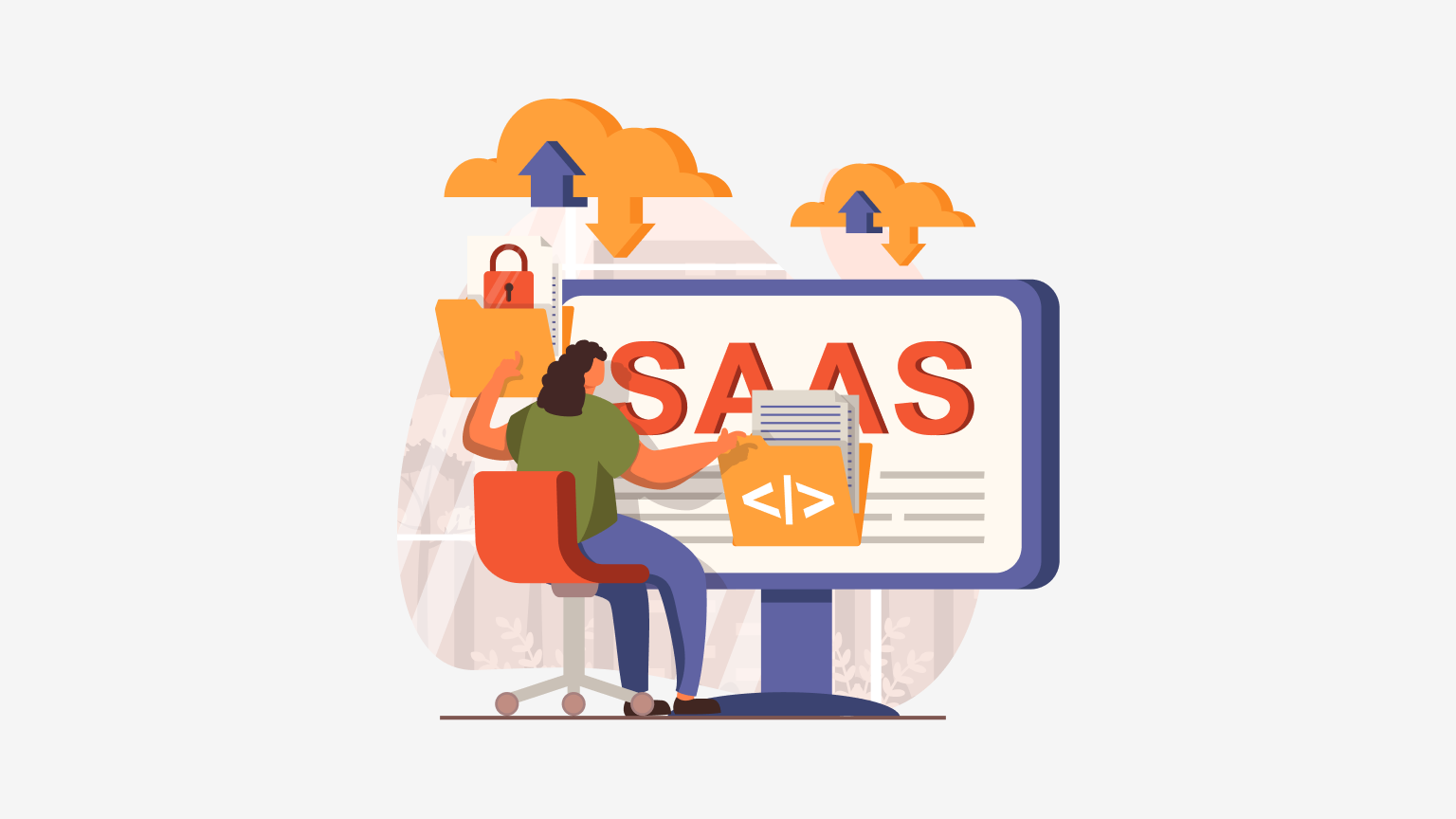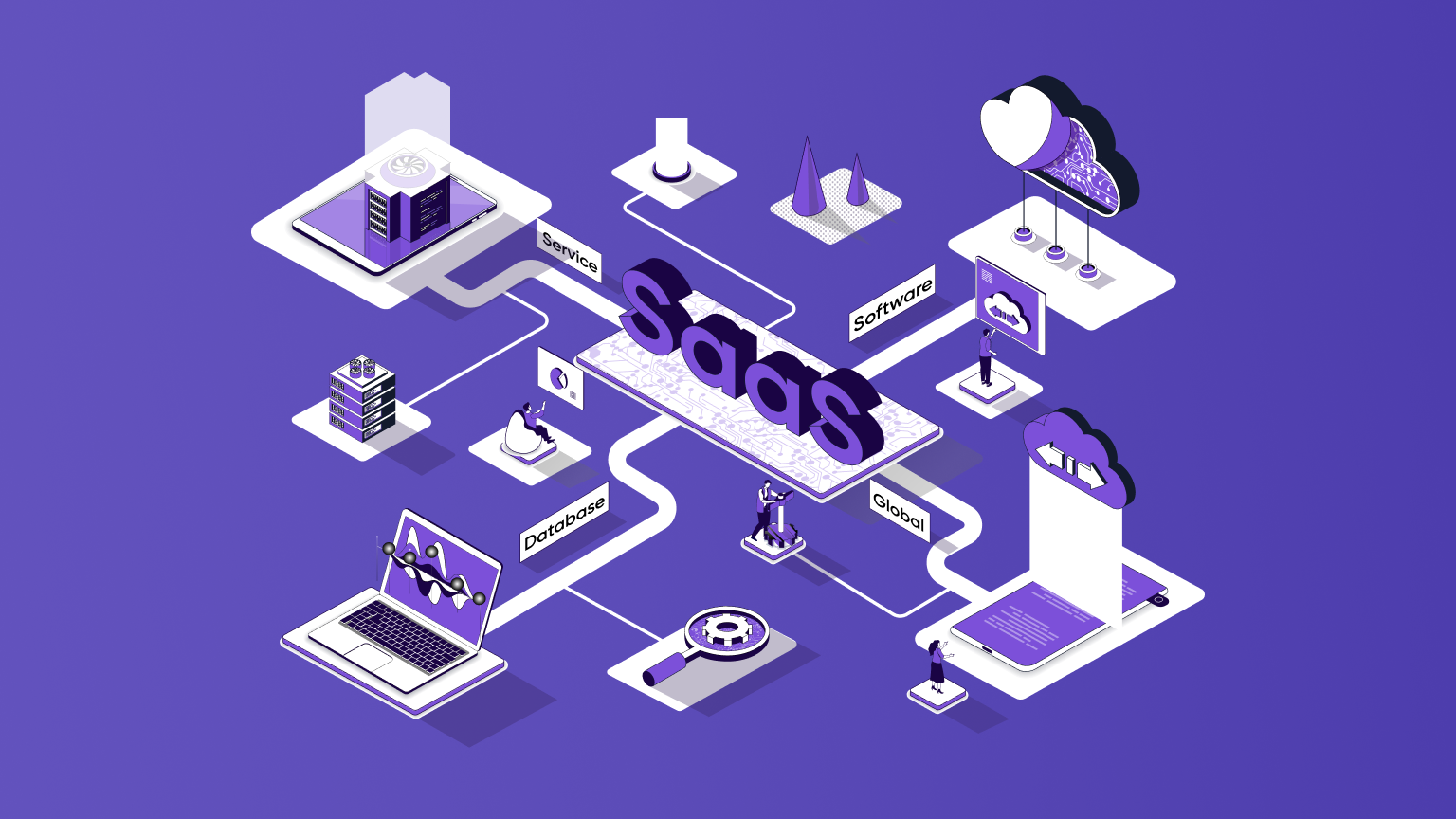Welcome to our exploration of the top SaaS frameworks and how they can propel your business to new heights. As an innovator seeking to harness the power of SaaS technologies, you'll find a wealth of information in this article detailing how implementing the right SaaS solutions can drive business growth and scalability.

In this section, I will explain the definition of SaaS (Software as a Service) and discuss the major reasons for its widespread adoption in the business world. By understanding the SaaS development process, we can appreciate the vital role that it plays in reshaping industries, streamlining operations, and opening new doors for innovation.
SaaS, or software as a service framework, refers to a software application delivery model where the application is hosted, maintained, and updated remotely by a third-party provider. Users can access the software via an internet connection, eliminating the need for them to install, maintain, or update it on their local machines or personal devices. This revolutionary SaaS application development approach has gained immense traction in the last decade as businesses around the globe are realizing its potential for enhancing productivity, reducing operating costs, and providing a seamless user experience.
Adopting a SaaS development model presents several advantages for businesses that contribute to its rising popularity. Some of the most significant benefits include:
Cost Reduction: With a SaaS model, companies no longer need to spend on expensive software installations, hardware, and IT infrastructure. In addition, monthly or annual subscription fees make it easier for businesses to scale their software usage without incurring heavy upfront costs.
Accessibility: SaaS applications are accessible anywhere, anytime, as long as users have an internet connection. This enables remote work and collaboration, allowing employees to access the tools and resources they need, even when not in the office.
Maintenance Ease: SaaS providers handle software updates, security patches, and maintenance, saving businesses valuable time and resources typically consumed by managing their own software solutions.
To sum up, the SaaS model has redefined how businesses utilize and manage software applications. By understanding the importance of SaaS development and its underlying benefits, businesses can harness the power of this innovative approach to drive growth, increase efficiency and remain competitive in an ever-changing world.
In this crucial section, I will break down the key elements that form the backbone of any strong SaaS architecture. The discussion will cover how these components work together to create a robust, scalable, and secure SaaS platform that can support seamless SaaS application development and delivery. Insights on the infrastructure requirements for a capable SaaS solution will be provided as well.
First, an effective SaaS platform must ensure that it provides a multi-tenant environment. This means that a single instance of the software can serve multiple customers, or tenants, while keeping their data separate and secure. This essential characteristic of SaaS architecture greatly influences the scalability of the solution, as it enables service providers to add new customers to the platform without affecting the performance or security of existing users.
Next, proper SaaS architecture should incorporate an advanced security mechanism to protect data and ensure compliance with various industry standards and legal requirements. This includes encryption, secure data storage, consistent backup, and access management features. Implementing a strong security model is a fundamental aspect of attracting and retaining customers in today's highly competitive SaaS market.
Furthermore, a reliable SaaS development services must provide seamless integration with third-party services and applications. This flexibility is crucial for businesses looking to deliver a personalized experience to their users, as they can easily combine their SaaS solution with other tools and systems relevant to their specific needs. Integration capabilities not only improve the functionality and value of the platform but can also boost customer loyalty and satisfaction.
Another important aspect of a successful SaaS architecture is its ability to provide comprehensive monitoring, performance management, and analytics tools. These tools help service providers understand the usage patterns of their customers and provide insights into potential bottlenecks, performance issues, and areas for improvement. This data is essential to maintain the competitiveness and quality of the platform, ensuring that users can efficiently achieve their desired outcomes.
In conclusion, the key components that make up a successful SaaS architecture include a multi-tenant environment, robust security, seamless integration capabilities, and comprehensive monitoring and analytics tools. These elements work together to create a solid foundation for SaaS platforms, enabling them to deliver a reliable, secure, and scalable service. Ensuring that these factors are all carefully considered during the development process is vital to building a successful SaaS platform that meets the ever-evolving demands of today's market.

In the highly competitive world of SaaS technology, having a strong foundation is essential for success. Scalability and flexibility are two vital aspects that enable businesses to grow and adapt to changing market demands. A well-designed SaaS framework can provide this foundation, fostering innovation and accommodating growth. This section will delve into the various frameworks used in SaaS applications, their features, and benefits. We'll also discuss how choosing the right framework can significantly contribute to the growth and adaptability of a SaaS business.
When it comes to SaaS application development, there is no one-size-fits-all solution. Different frameworks offer unique features and capabilities to cater to specific SaaS development services and industry requirements. It's essential to evaluate these frameworks based on key criteria such as ease of use, flexibility, performance, and support for advanced technologies, among others. In doing so, businesses can make an informed decision and select the most suitable framework for their particular needs. Some popular SaaS frameworks include Ruby on Rails, Django, and Laravel, which exhibit a range of capabilities to meet diverse developer and industry demands.
Investing in the right SaaS framework can be a game-changer for businesses looking to scale their operations and achieve success in the ever-evolving SaaS landscape. A robust, scalable, and flexible framework ensures seamless SaaS application development, improving time-to-market and reducing development costs. Furthermore, a powerful framework supports the integration of cutting-edge technologies, allowing businesses to stay ahead of the competition and maintain a market-leading position.
In conclusion, a well-thought-out SaaS framework can serve as a strong foundation for any business striving for growth and flexibility in the SaaS industry. By evaluating different frameworks and selecting the one that best aligns with business objectives and requirements, organizations can ensure they are well-equipped to conquer the challenges of the rapidly evolving SaaS landscape.
As a professional copywriting journalist, I believe that implementing SaaS solutions can have a profound impact on business performance. By adopting strategic approaches to SaaS deployment, integrating these solutions into existing workflows, and leveraging SaaS technology for operational excellence, companies can maximize their return on SaaS investments. In this section, I will focus on actionable insights that businesses can use to achieve better efficiency, productivity, and profitability.
First and foremost, it is essential to select the right SaaS platform and partner with experienced SaaS development services providers. These experts can guide organizations through the entire implementation process, from selecting the most suitable SaaS tools to customizing solutions to meet specific business requirements. Additionally, they can help ensure seamless integration with existing systems, minimizing disruptions to daily operations.
Next, businesses should establish a clear plan for change management and employee training. By effectively communicating the benefits of SaaS adoption and providing comprehensive training, companies can encourage employees to embrace new tools, processes, and workflows. This increases the likelihood of successful SaaS implementation, leading to enhanced business performance in the long run.
Finally, organizations must continuously monitor and optimize their SaaS solutions to ensure ongoing success. Regular data analysis and performance evaluation can help identify areas for improvement and drive further innovation. By staying updated on the latest SaaS technology advancements and incorporating them into daily operations, businesses can effectively maintain a competitive edge and continuously improve overall performance.
Real estate SaaS solutions for smart management
Optimize teams with SaaS user management tools.
Mastering B2C SaaS: strategies for success
A SaaS (Software as a Service) framework is a prebuilt, reusable structure that provides the foundation for SaaS application development. It enables businesses to develop and deploy software applications more efficiently and scale their operations with greater flexibility. SaaS frameworks help companies streamline their processes, automate tasks, and improve performance, ultimately leading to business growth.
The key benefits of adopting a SaaS model include cost reduction, improved accessibility, easy maintenance and updates, increased scalability, and superb compatibility with various devices and platforms. SaaS solutions allow businesses to focus on their core competencies and reduce their reliance on in-house IT resources.
A successful SaaS architecture includes key components such as multi-tenancy, a flexible data model, a scalable infrastructure, API integration, secure authentication, and user management. These elements work together to create a robust, scalable, and secure platform for seamless SaaS application development and delivery.
When evaluating different frameworks for SaaS applications, consider factors such as the size and complexity of your project, your development team's proficiency, the framework's scalability, its flexibility, the level of customization you need, and the existing community support. It's important to choose a framework that aligns with your project requirements and scalability needs.
Implementing SaaS solutions effectively requires careful planning and execution. This includes assessing your business needs, choosing the right SaaS solution, integrating it into your existing workflows, monitoring and adjusting the software for optimal performance, and providing training and support to your team. Additionally, leveraging SaaS technology for operational excellence involves continuously evaluating the impact and performance of the SaaS solution and making necessary adjustments to achieve greater efficiency, productivity, and profitability.
SaaS Framework Solutions
Growth-Oriented SaaS Frameworks
Top SaaS Frameworks
Enhancing Growth with SaaS Solutions
SaaS Frameworks for Business Growth
Passionate writer who loves diving into diverse subjects. Through my engaging content, I aim to inspire and captivate readers.
Suggested Articles
